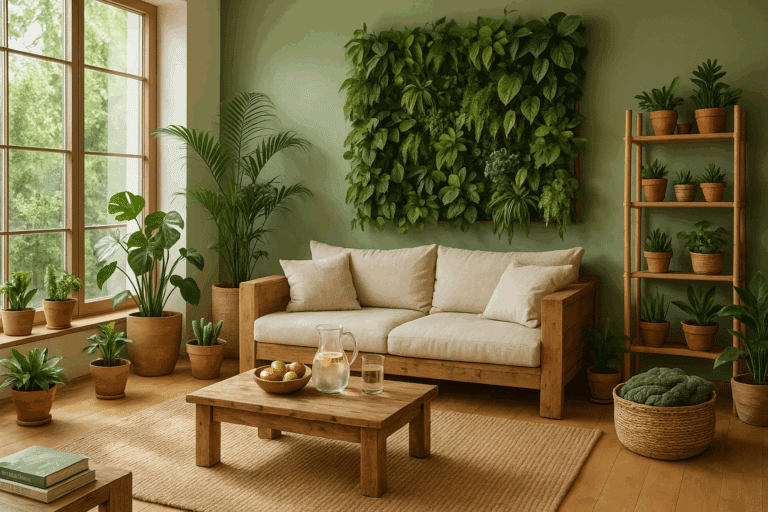This post will dive into the captivating world of DIY greenhouse shelves, ingeniously crafted from old windows. Breathe new life into those rustic pieces by repurposing them into stylish platforms for your plants.
Experience the joy of seeing your favorite greenery thrive within the confines of a home-made greenhouse. These vintage-inspired shelves not only provide an ideal environment for your plants to grow, but they also act as an artistic display that adds character to your living space. The combination of old-world charm and natural beauty creates an aesthetic that is sure to mesmerize.

In this post, you’ll be guided through the entire process of transforming old windows into charming greenhouse shelves. From sourcing the right windows to the nitty-gritty of assembly, you’ll learn every step of the way. By the end of it, you will have gathered all the knowledge needed to embark on this DIY project with confidence.
Moreover, this post will also explore the different types of plants best suited for these vintage greenhouse shelves. Whether you’re an avid fan of succulents, ferns, or small flowering plants, you’ll discover how to perfectly arrange them for a stunning display.
Finally, we will share tips on maintaining your greenhouse shelves, ensuring that they remain in prime condition and continue to be a sanctuary for your plants. Get ready to embark on a journey that marries creativity, sustainability, and horticulture, culminating in a project that will bring your home décor to new heights. It’s time to grow in style! 🌿🏡✨
Understanding the Concept of From Window to Wonder: Transforming Old Frames into Functional Greenhouse Shelves
Understanding the Concept of Greenhouse Shelves
When thinking about greenhouses, images of expansive glass structures filled with flourishing greenery often come to mind. However, in a world increasingly focused on space efficiency, sustainability, and personalized design, the idea of greenhouse shelves offers a refreshing alternative. These compact, stylish installations combine the functionality of a greenhouse with the charm of vintage design, turning even the most overlooked corners of a home into vibrant plant havens.
Greenhouse shelves are vertical plant displays built using reclaimed materials—most notably, old windows. These windows are used to form a light-capturing, protective enclosure around a shelving unit, creating a microclimate ideal for nurturing small plants. Whether installed near a bright window, on a covered porch, or even indoors with supplemental lighting, these shelves provide controlled conditions similar to traditional greenhouses—on a much smaller scale.
They exemplify the concept of functional decor: pieces that not only enhance the aesthetic value of your space but also serve a practical purpose. In this case, they support plant health while doubling as a statement of style and sustainability. For urban dwellers and eco-conscious creatives alike, greenhouse shelves provide a perfect intersection of gardening, upcycling, and interior design.
Why Greenhouse Shelves Matter
Sustainability and Upcycling
At their core, greenhouse shelves embody sustainable design. By repurposing old windows and scrap wood, you minimize waste and reduce demand for new materials. Rather than ending up in a landfill, these forgotten objects find new life as architectural elements in a personalized botanical display.
This approach also resonates with the principles of the circular economy, where the goal is to keep materials in use for as long as possible. Each greenhouse shelf created from salvaged parts is a small act of environmental responsibility—one that also adds meaning and individuality to your home.
Compact Gardening Solution
For people living in small apartments, shared housing, or urban environments, greenhouse shelves make it possible to garden creatively without needing a full greenhouse or yard. They can be scaled to fit any space and tailored to specific plant types or growing goals—whether it’s herbs for the kitchen, succulents for a sunny nook, or seedlings ready for transplanting.
Aesthetic Appeal
Old window frames have an inherent charm that’s hard to replicate. Their worn edges, vintage hardware, and imperfect panes tell a story. When paired with greenery, these elements create a display that’s equal parts rustic and refined. The resulting structure acts not only as a planter but also as an artistic installation—inviting admiration while nurturing life.
The Transformation Process: Turning Old Windows into Greenhouse Shelves
Transforming discarded windows into elegant greenhouse shelves requires a thoughtful process, but the end result is rewarding and truly unique. Here’s a step-by-step guide that covers everything from material sourcing to design enhancements.
Step 1: Material Collection and Preparation
Begin by collecting the core elements for your build:
- Old Windows: These are the stars of your project. Look for multi-pane or single-pane windows that are free of rot and have intact glass. Ideal sources include flea markets, antique stores, salvage yards, renovation projects, or even your own garage.
- Wooden Boards: You’ll need wood to create the structural frame and this the shelves. Reclaimed wood is ideal, but new wood can also be used if it matches the desired aesthetic.
- Fasteners and Hardware: Screws, hinges, handles, and brackets will hold the unit together. If you want doors that open, salvaged hardware from the original windows adds authenticity.
- Tools: A drill, saw, screwdriver, sandpaper, measuring tape, and level are essential. Safety gear like gloves and protective eyewear is also recommended.
- Paint or Finish (Optional): Depending on your style own, you may want to paint or seal the wood and windows. A weatherproof finish is advisable if the unit will be exposed to moisture.
Preparation Tips:
- Remove old paint carefully, especially if lead-based.
- Sand any rough wood surfaces.
- Check for cracked panes and repair or replace them.
- Clean the windows thoroughly to allow maximum light transmission.
Step 2: Designing the Frame
With your materials prepared, it’s time to design and build your greenhouse shelf. Begin by sketching the general layout, keeping in mind the size and shape of the windows. Decide whether the shelves will be enclosed on all these sides or partially open.
Popular configurations include:
- Two-Sided Shelf: Windows form the back and front, with wood framing the sides and base.
- Corner Unit: Designed to fit snugly into a room corner using L-shaped frames.
- Freestanding Vertical Case: Windows on three sides, often with a hinged front panel.
Once you have your design, measure and cut the wood for the frame. Assemble the base and sides first using wood screws and brackets. Attach the windows using hinges or fixed brackets, depending on whether you want doors a that open.
Step 3: Adding the Shelves
Install wooden shelves inside the frame. Spacing depends on the size of the plants you intend to grow. For example:
- Shallow herbs or succulents may need only 10–12 inches of vertical clearance.
- Taller plants or starter trays may require up to 18 inches.
Use shelf brackets or wood cleats to secure each shelf. Ensure they are level and well-supported to handle the weight of soil-filled pots.
Optional: Line the shelves with waterproof trays or plastic liners to catch excess water.
Step 4: Finishing Touches
This is where you can truly personalize your greenhouse shelf:
- Paint or Stain: Choose a finish that complements your space. White paint enhances light reflection, while dark stains create a dramatic contrast with plants.
- Add Lighting: For darker corners, install LED grow lights under each shelf.
- Decorative Touches: Add hooks for hanging tools, chalkboard panels for labeling plants, or vintage handles and hinges for extra charm of that.
- Insulation Options: In colder climates, consider adding removable panels of plastic film or using weather stripping to retain heat inside the shelf unit.
Tips for a Successful Transformation
1. Start Small
If you’re new to building furniture or working with reclaimed materials, begin with a single-shelf unit. Gain confidence before scaling up to multi-level or enclosed structures.
2. Prioritize Stability
Always test the frame and shelves for stability before placing pots. Plants, when watered, can add significant weight. Reinforce wobbly joints or add rear brackets if needed.
3. Mind the Light
Choose a location that receives ample sunlight. South-facing windows are ideal. If natural light is limited, supplement with full-spectrum LED grow lights.
4. Consider Ventilation
Even small greenhouse shelves can get humid. Leave small gaps between window panels or incorporate vent holes to prevent mold growth and overheating.
Benefits of Greenhouse Shelves
Greenhouse shelves offer a blend of visual appeal, gardening utility, and environmental mindfulness. Here’s a closer look at their many advantages:
1. Vertical Efficiency
Incorporating vertical structures allows you to grow more plants without taking up floor space. This is especially beneficial in apartments, balconies, or compact homes.
2. Climate Control
Greenhouse shelves help maintain a more stable microclimate than open-air displays. The enclosed structure shields plants from drafts, sudden temperature changes, and pests.
3. Seasonal Flexibility
Use your shelf to grow herbs in winter, start seedlings in spring, propagate cuttings in summer, or display pumpkins and gourds in fall. With a few modifications, it serves you year-round.
4. Personalized Decor
No two greenhouse shelves are alike. By repurposing windows with unique frames, hardware, and patinas, you create a one-of-a-kind showpiece that becomes part of your home’s personality.
5. Teaching Tool
These shelves are a fantastic way to teach children about plant care, sustainability, and basic woodworking. It’s hands-on learning that yields beautiful and edible results.
Creative Uses for Greenhouse Shelves
Aside from growing plants, you can repurpose greenhouse shelves for various functions:
- Herb Drying Station: Install a mesh shelf to air-dry herbs like lavender, thyme, or mint.
- Mini Orchid House: Create humidity-rich conditions for tropical plants.
- Seed Library: Use labeled drawers or jars to store seeds from your harvests.
- Seasonal Display: Decorate with themed plants and accents for holidays and seasons.

The structure can even double as a natural light cabinet—a place to display pottery, books, or collectibles that benefit from sunlight.
Conclusion: Light, Life, and Legacy in a Shelf
Greenhouse shelves are more than a clever gardening hack—they are a testament to creativity, conservation, and craftsmanship. By transforming old windows into functional plant displays, you give new purpose to forgotten materials and fill your home with light and life.
The process of building your own shelf is deeply rewarding, offering not only a new piece of furniture but also a deeper connection to the spaces you inhabit and the plants you nurture. It’s a project that invites personalization, sparks conversation, and radiates quiet beauty in its everyday use.
So the next time you see an old window discarded by the roadside, imagine the possibilities. With a bit of vision and a few tools, it could become the frame through which new growth, light, and joy enter your home—one shelf at a time.
Conclusion
In conclusion, the ‘Grow in Style’ concept of transforming old windows into charming greenhouse shelves for a vintage plant display provides an eco-friendly and aesthetic solution for plant enthusiasts. It not only adds a unique vintage appeal to your space, but also aids in efficient plant growth by offering a conducive environment. This repurposing strategy contributes to sustainability by reducing waste, promoting a greener planet.
The vintage greenhouse shelves act as a sanctuary for your plants, offering an ideal environment for their growth and nourishment. Moreover, these structures provide a cost-effective and compact solution for urban dwellers who lack sufficient gardening space. They are versatile and can be easily adapted to suit various plant types and aesthetics.
These greenhouse shelves not only provide a home for your plants but also tell a story, bringing a sense of history and character to your living space. Each salvaged window carries with it a unique past, lending a distinct charm to your greenhouse.
By adopting this innovative strategy, we can contribute to the preservation of our environment while also creating a visually appealing and functional plant display. ‘Grow in Style’ is more than just a trend, it’s a lifestyle statement encouraging eco-consciousness and creativity. Thus, transforming old windows into charming greenhouse shelves is not just about gardening, it’s about growing in style while making a positive environmental impact.



